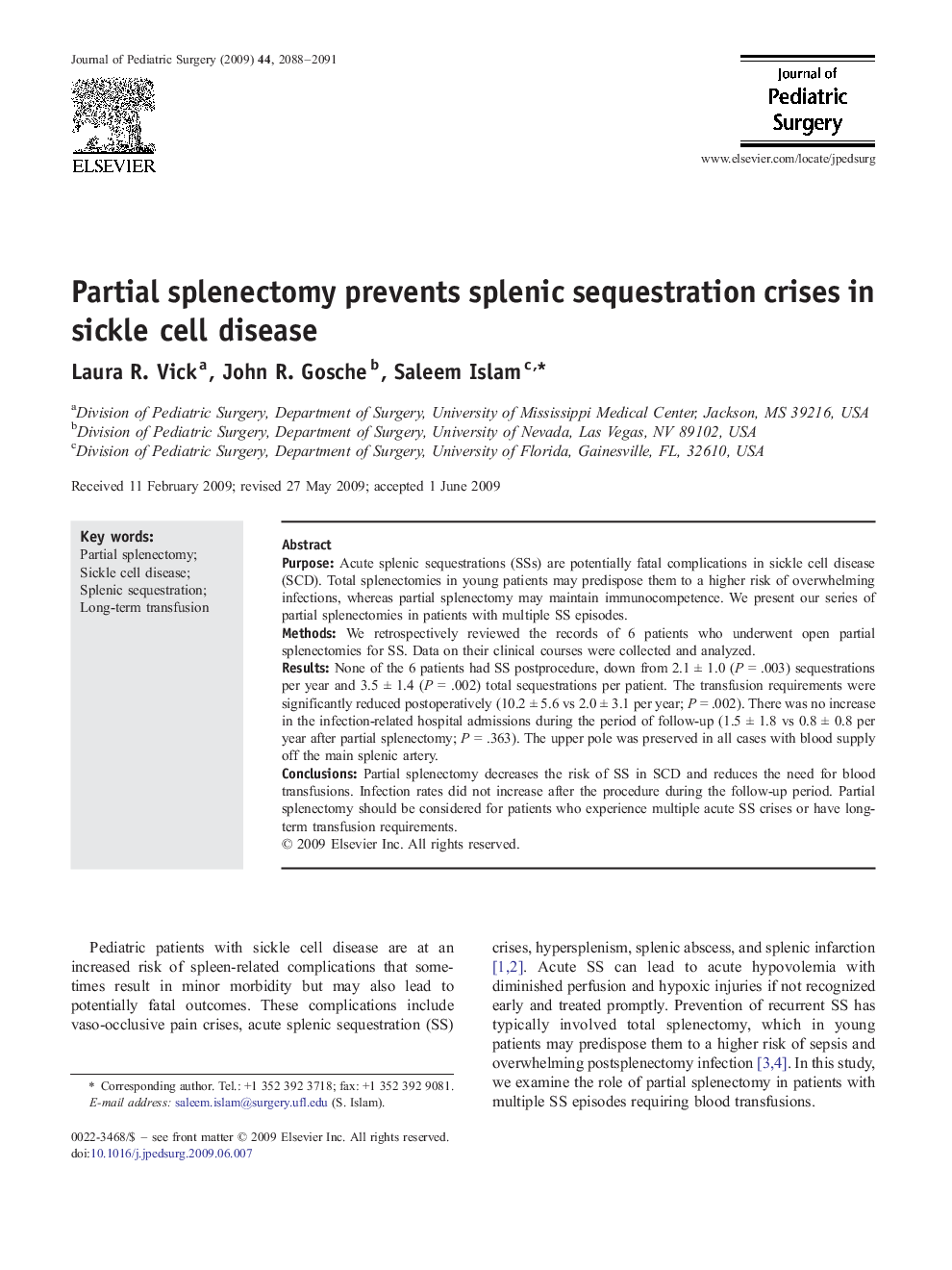| Article ID | Journal | Published Year | Pages | File Type |
|---|---|---|---|---|
| 4157670 | Journal of Pediatric Surgery | 2009 | 4 Pages |
PurposeAcute splenic sequestrations (SSs) are potentially fatal complications in sickle cell disease (SCD). Total splenectomies in young patients may predispose them to a higher risk of overwhelming infections, whereas partial splenectomy may maintain immunocompetence. We present our series of partial splenectomies in patients with multiple SS episodes.MethodsWe retrospectively reviewed the records of 6 patients who underwent open partial splenectomies for SS. Data on their clinical courses were collected and analyzed.ResultsNone of the 6 patients had SS postprocedure, down from 2.1 ± 1.0 (P = .003) sequestrations per year and 3.5 ± 1.4 (P = .002) total sequestrations per patient. The transfusion requirements were significantly reduced postoperatively (10.2 ± 5.6 vs 2.0 ± 3.1 per year; P = .002). There was no increase in the infection-related hospital admissions during the period of follow-up (1.5 ± 1.8 vs 0.8 ± 0.8 per year after partial splenectomy; P = .363). The upper pole was preserved in all cases with blood supply off the main splenic artery.ConclusionsPartial splenectomy decreases the risk of SS in SCD and reduces the need for blood transfusions. Infection rates did not increase after the procedure during the follow-up period. Partial splenectomy should be considered for patients who experience multiple acute SS crises or have long-term transfusion requirements.
